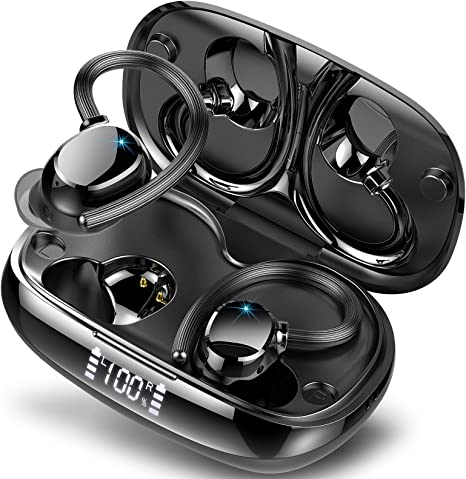The Material Science of a Perfect Sip: Why Ice Isn't Just Frozen Water
Update on Oct. 11, 2025, 5:53 p.m.
It’s a deceptively simple question that has likely crossed your mind while sitting in a favorite café or restaurant: why does the ice in this drink seem so much better than the ice from your home freezer? It’s softer, satisfyingly chewable, and seems to meld with the beverage in a way that the clunky, aggressive cubes from a plastic tray never do. The answer isn’t a matter of water quality or secret syrups. It’s a story of physics, geometry, and clever engineering. To understand the perfect sip, we must first accept a fundamental truth: not all ice is created equal.

The Universal Blueprint: A World of Hexagons
At a molecular level, virtually all ice you will ever encounter is technically known as ‘ice Ih’. The ‘h’ stands for hexagonal, describing the six-sided crystalline structure that water molecules organize themselves into when they freeze. Driven by the V-shape of the H₂O molecule itself, this lattice is the universal blueprint for every snowflake, frost pattern, and ice cube. It is the reason ice is less dense than liquid water, a rare and vital property among substances.
But if every piece of ice, from an arctic glacier to the cube in your glass, shares this identical molecular architecture, why are their properties so vastly different? The secret isn’t in the microscopic chemistry, but in the macroscopic geometry.
Shape is Everything: The Power of the Surface-Area-to-Volume Ratio
The single most important factor governing how a piece of ice behaves in your drink is its surface-area-to-volume (S/V) ratio. This ratio dictates the rate of heat exchange. The more surface area exposed to the warmer liquid for a given amount of ice, the faster the drink cools, and the faster the ice melts.
Consider a simple, concrete example. Imagine a single, solid ice cube that is 2x2x2 centimeters.
- Its volume is $2 \times 2 \times 2 = 8 \text{ cm}^3$.
- Its surface area is $6 \times (2 \times 2) = 24 \text{ cm}^2$.
- Its S/V ratio is $24 / 8 = 3$.
Now, let’s take that same 8 cm³ volume of ice but divide it into eight 1x1x1 cm cubes.
- The total volume remains $8 \times (1 \times 1 \times 1) = 8 \text{ cm}^3$.
- The surface area of one small cube is $6 \times (1 \times 1) = 6 \text{ cm}^2$. The total surface area for all eight is $8 \times 6 = 48 \text{ cm}^2$.
- The new S/V ratio is $48 / 8 = 6$.
By simply changing the form factor, we have doubled the surface area for the exact same amount of ice. This is why crushed ice chills a drink almost instantly, but also waters it down with astonishing speed. For decades, beverage chilling was a stark choice between the slow, steady chill of a large cube and the fast, diluting shock of crushed ice. Then, engineers devised a third way.

The Birth of a Better Ice: Engineering the Nugget
The coveted “nugget ice”—also known as pellet or chewable ice—is a product of mechanical ingenuity, not simple freezing. A modern countertop nugget ice maker, for instance the Aeitto CB23D, operates on a principle more akin to a pasta maker than an ice tray.
Inside the machine, a super-chilled metal auger or drum is constantly coated with a thin layer of ice. A blade immediately scrapes these fine ice flakes away. Instead of being collected as loose shavings, these flakes are forced into a narrow, cylindrical die. Under immense pressure, the flakes are compacted and fused together, extruding out as a continuous rod of compressed ice, which is then broken into small “nuggets.”
This process is transformative. The resulting nugget is not a solid, clear block of frozen water. It is an opaque composite of countless ice flakes, riddled with microscopic fissures and trapped air pockets. This unique, porous structure grants it two critical properties:
- Lower Bulk Density: While the ice crystals themselves are dense, the air pockets make the nugget as a whole less dense than solid ice. This contributes to its “softer” feel.
- Structural Weakness: When you bite into it, the nugget doesn’t resist with the unyielding force of a solid cube. It fractures easily along the countless internal fault lines between the fused flakes, creating a satisfying, low-impact crunch.
Applied Science: How Engineered Ice Creates a Better Drink
Now we can fully appreciate how these carefully engineered properties translate to the experience in your glass.
The porous nugget has a vastly higher effective S/V ratio than a solid cube, allowing it to cool a drink with the speed of smaller ice forms. However, because it is a single, compressed unit, it doesn’t melt with the runaway speed of loose crushed ice, striking a perfect balance between rapid cooling and controlled dilution.
Furthermore, those microscopic crevices become an active part of the drink. As the nugget tumbles in your glass, the beverage seeps into its internal structure. This turns the ice into a flavor sponge. When you finally crunch on the remaining nuggets, they don’t taste of plain, bland water; they release a final, chilled burst of the drink itself. This simple-sounding feature is profound, transforming the ice from a passive cooling agent into an active, flavor-enhancing component.
Ultimately, the journey from a simple freezer tray cube to an engineered nugget of ice is a perfect illustration of applied material science. It is a powerful reminder that by understanding and manipulating the structure and form of a substance—even one as common as frozen water—we can fundamentally change its function and elevate our sensory experience. The “better” ice in your favorite drink isn’t a result of magic or mystery; it’s a product of better physics.
(Here, an infographic titled “The Anatomy of Ice” would be placed, comparing Cube, Crescent, and Nugget ice across key metrics: S/V Ratio, Density, Melt Rate, and Best For [Whiskey, Soft Drinks, Cocktails]).







































